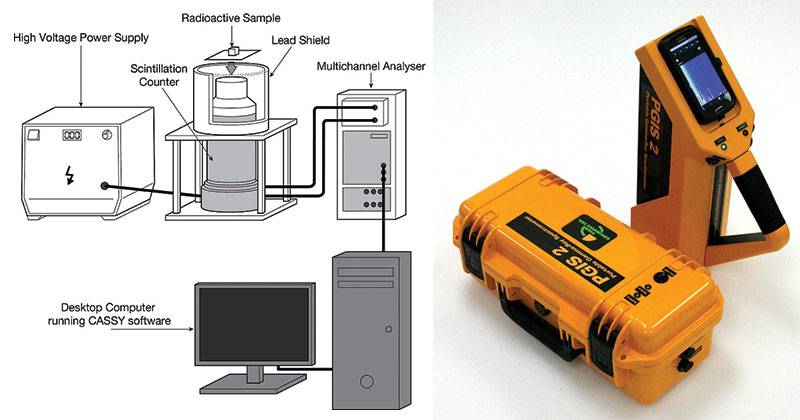Contents
Hazelnut (Corylus avellana L.) has significance in human sustenance and wellbeing due to its extraordinary fat (for the most part oleic corrosive) and nonfat (protein, regular sterols, dietary fiber, tocopherols, and phenolic cell reinforcements) piece, which influences human wellbeing decidedly [1, 2]. The job of hazelnut in lessening cardiovascular illness, diabetes, and malignant growth has been accounted for [3]. Notwithstanding its defensive well-being impacts, it has additionally monetary significance [4, 5]. Hazelnut and its handled items are utilized in the food, drug, and corrective industry [6]. They can likewise be included in different items as fixings. One of the principal issues in gamma spectroscopy is to keep quality support during capacity because of bug sterilization and food-borne microbes [7]. Also, the nature of nuts can be impacted during the capacity time frame because of the progressions in the physiology and organic chemistry of the nut in the wake of gathering [8]. Consequently, clear comprehension of the physiological and biochemical changes of plants during the postharvest period will add to further develop stockpiling conditions and in this manner save the nature of food tests. To forestall the postharvest loss of hazelnut and different yields, food light is perceived as a successful innovation
Materials and Methods
2.1. Test Preparation for FTIR
Hazelnut tests, which were not presented to light beforehand, were acquired from neighborhood makers and illuminated with the portion of 1.5, 3, and 10 kGy utilizing gamma radiation from a cobalt-60 source (ISSLEDOVATELJ (Gamma-cell)) at the Turkey Atomic Energy Authority Food Irradiation Unit as portrayed exhaustively by school science equipment.
Hazelnut tests (n = 8) were cut into four pieces, three of which were illuminated with the dosages 1.5, 3, and 10 kGy, and the last one was utilized as control. To acquire nut tissue powder, all examples were ground and dried in a MAXI dry to freeze dryer for the short term. Then, the ground tests were blended in with potassium bromide (KBr) in a 1/100 proportion. This powder was compacted into a slight KBr circle under a strain of ∼100 kg/cm2 for 8 minutes for FTIR spectroscopic examination. This interaction was rehashed multiple times for each control and illuminated example, and the typical range was gotten for each example utilizing OPUS Software Program.
2.2. FTIR Data Collection
Infrared spectra were produced in absorbance mode utilizing a BOMEM MB157 FTIR (The Michelson Series, Bomem, Inc., Quebec, Canada) spectrometer outfitted with a DTGS (deuterated triglycine sulfate) locator. The example compartment was ceaselessly cleaned by dry air to lessen water fume and carbon dioxide impedance.
The FTIR spectra of tests were kept in the 4000-1000 cm−1 locale at room temperature. Each interferogram was gathered by co-adding 400 sweeps at 4 cm−1 goals. Three unique KBr plates got from each example were checked. They uncovered practically indistinguishable spectra. Then, at that point, a mean FTIR range was acquired for each example and these normal spectra were utilized in the additional investigation.
2.3. Information Preprocessing
An unearthly quality test was applied to all FTIR spectra. This test included tests for remaining water fume groups and the sign to-commotion proportion. All spectra that have breezed through these assessments were in this way unit vector standardized. Vector standardization was performed over the researched otherworldly district of interest independently, in particular, the 4000-1000 cm−1, 3050-2800 cm−1, and 1800-1000 cm−1 locales, utilizing “The Unscrambler X” programming, variant 10.3.
Conclusion
A blend of ATR-FTIR spectroscopy with chemometric techniques like HCA or potentially PCA effectively segregates hazelnut tests as indicated by the applied illumination portions. The outcomes uncovered that 1.5 kGy illuminated examples can’t be separated from the control tests, showing that light at this portion didn’t essentially change hazelnut synthesis and is reasonable for the light of hazelnut tests. The adjustments in the spectroscopic boundaries, for example, signal power and recurrence demonstrated that the light cycle prompts worldwide changes in the items and designs of lipids and proteins. In light of these otherworldly changes, multivariate examinations give strong and reasonable techniques for grouping illuminating examples. Both chemometric strategies, HCA and PCA, have grouped the low-and high-portion illuminated examples autonomous from the picked ghastly locale. The consequences of the current review uncovered the capacity of the utilization of FTIR spectroscopy joined with multivariate examinations to make separation among low-and high-portion lighted hazelnut tests. The present review is a showing of the relevance of the method introduced here, as a fast, administrator autonomous, touchy, and savvy procedure in the field of the food industry. Further examinations utilizing a bigger number of tests will take into the polarization of light in the formation of an information base and the variation of the mid-infrared spectroscopy for on-location application.

